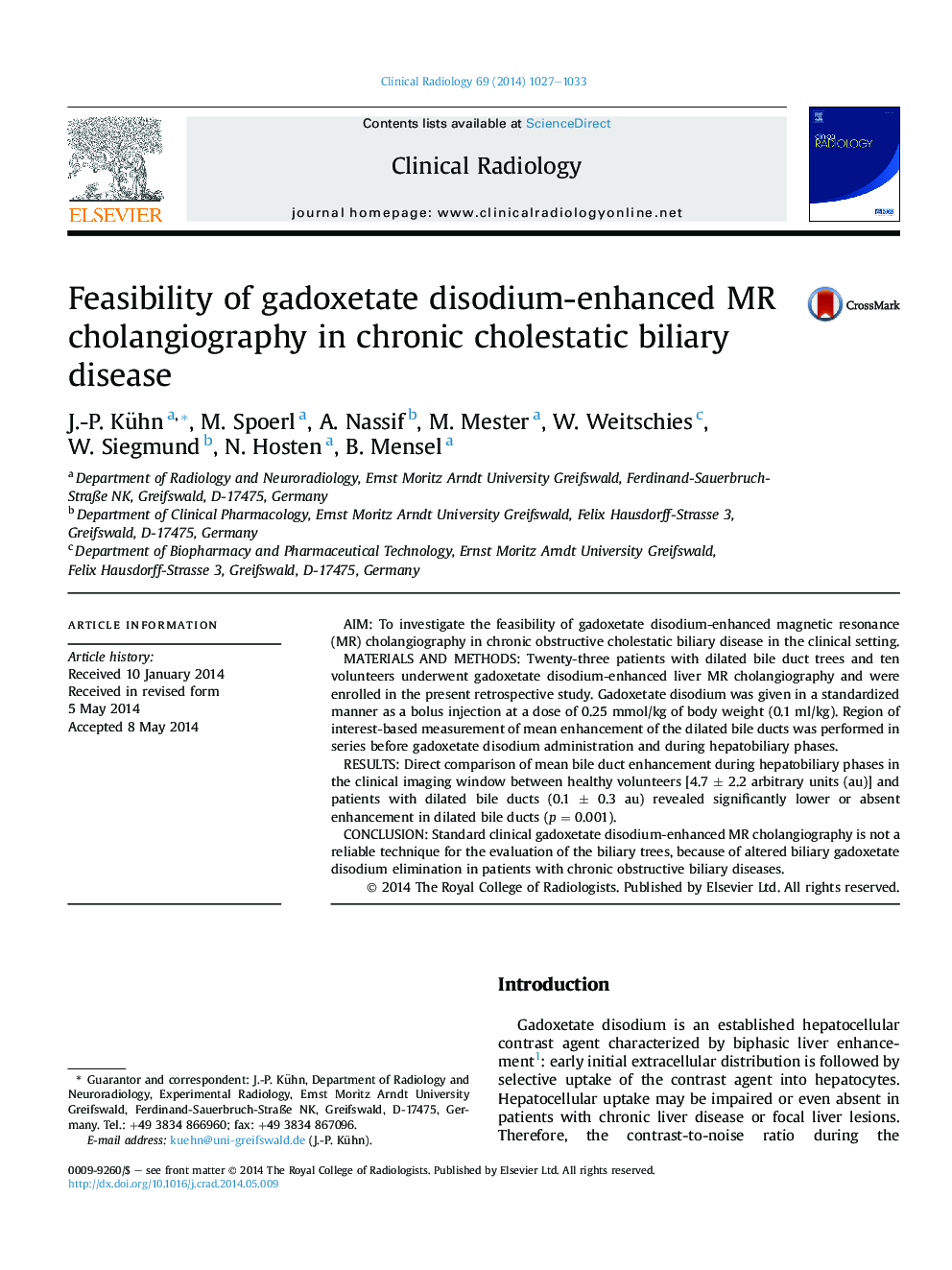| Article ID | Journal | Published Year | Pages | File Type |
|---|---|---|---|---|
| 3981769 | Clinical Radiology | 2014 | 7 Pages |
•Biliary excretion of gadoxetic disodium is impaired in subjects with chronic central or segmental bile duct obstruction.•MR cholangiography using gadoxetic disodium is not feasible in patients with chronic cholestatic bile duct disease.•Gadoxetic disodium enhanced MRI is a potential biomarker to measure hepatobiliary transporter function.
AimTo investigate the feasibility of gadoxetate disodium-enhanced magnetic resonance (MR) cholangiography in chronic obstructive cholestatic biliary disease in the clinical setting.Materials and methodsTwenty-three patients with dilated bile duct trees and ten volunteers underwent gadoxetate disodium-enhanced liver MR cholangiography and were enrolled in the present retrospective study. Gadoxetate disodium was given in a standardized manner as a bolus injection at a dose of 0.25 mmol/kg of body weight (0.1 ml/kg). Region of interest-based measurement of mean enhancement of the dilated bile ducts was performed in series before gadoxetate disodium administration and during hepatobiliary phases.ResultsDirect comparison of mean bile duct enhancement during hepatobiliary phases in the clinical imaging window between healthy volunteers [4.7 ± 2.2 arbitrary units (au)] and patients with dilated bile ducts (0.1 ± 0.3 au) revealed significantly lower or absent enhancement in dilated bile ducts (p = 0.001).ConclusionStandard clinical gadoxetate disodium-enhanced MR cholangiography is not a reliable technique for the evaluation of the biliary trees, because of altered biliary gadoxetate disodium elimination in patients with chronic obstructive biliary diseases.
